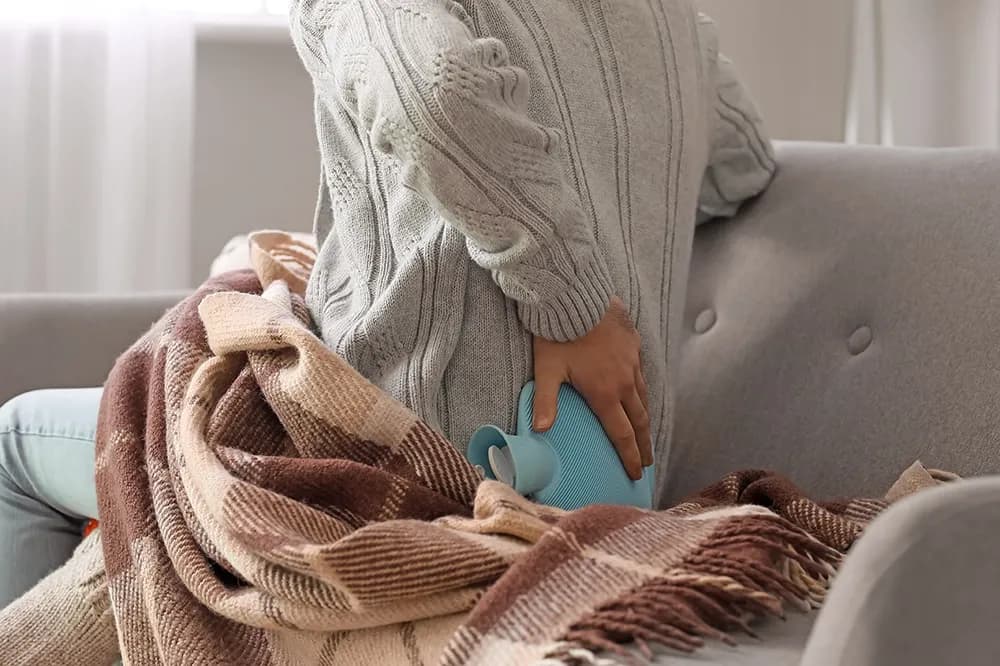Back pain: symptoms, intensity, duration... when should you seek help?
Back pain is very often temporary and benign. But sometimes the pain is intense, long-lasting and indicative of a more serious condition. How do you recognise the seriousness of lower back pain? What are the warning signs to seek medical attention?
Back pain is a very common condition: it is estimated that 84% of French people suffer from it at some time (1). Fortunately, in most cases, back pain heals spontaneously within a few days or weeks. But there are certain situations in which the pain does not go away, or even worsens, radiating to other limbs or accompanied by other symptoms. These signs must be taken seriously and justify a medical consultation. Learning to recognise them is therefore essential.
Common low back pain: contact your GP
If the back pain lasts between a few days and 4 to 6 weeks, it is known as ‘common’ low back pain (2). In the face of this pain, which can be acute, resting is a mistake to be avoided at all costs. You should remain as active as possible and consult your GP.
The doctor will diagnose common low back pain by observing the patient's symptoms and ruling out other possible causes. So-called ‘symptomatic’ low back pain, i.e. caused by an illness, fracture, infection or tumour, should be ruled out from the outset.
Once common low back pain has been diagnosed, the main aim of treatment will be to relieve the pain. The doctor will prescribe analgesics or anti-inflammatories and encourage the patient to maintain regular physical activity and adopt postures adapted to each situation (sleep, work, sport, etc.). People recover quickly from common low back pain: 90% of patients recover in less than a month (2).
Sub-acute low back pain: a new approach
When pain persists for more than six weeks, it is known as ‘sub-acute’ low back pain(3). It is essential to consult your GP again. If necessary, he or she will prescribe medical imaging tests.
The doctor will also look for factors that may be aggravating the lower back pain, so that they can be corrected: inappropriate posture, carrying heavy objects, intensive sport, excess weight, etc. He or she will pay particular attention to signs of possible chronicity, such as the intensity of the pain and so-called ‘psychosocial’ factors. For example, the treatment of work-related low back pain will require a multi-dimensional approach.
Physiotherapy sessions may also be prescribed. Although the effectiveness of massages has never been objectively assessed, they will nonetheless enable patients to relax and forget their pain for a while. The physiotherapist will also teach muscle-building exercises designed to strengthen specific muscles for better spinal support. For greater effectiveness, these exercises should be performed daily (2)(4).
Chronic lumbago: specific treatment
When pain persists for more than three months, this is known as ‘chronic’ low back pain. Specific treatment is then required.
Medical imaging tests are generally prescribed. But above all, the doctor must carefully monitor the occurrence of anxiety, depression, intense stress or lack of sleep. These factors are likely to alter the perception of pain and intensify it. They restrict the patient's daily activities and movements. And we know that inactivity is directly linked to back pain. So watch out for the vicious circle!
After these tests, the doctor can refer the patient to a multidisciplinary centre. These facilities offer rehabilitation programmes that include pain treatment, physical exercise and educational and counselling sessions. Sometimes combined with therapy, these sessions aim to help the patient (5) reintegrate into society and the workplace (4).
Red flags: seek help quickly!
In rarer cases, back pain can be a sign of serious illness. Fractures, infections, tumours... these are what cause the pain. There are a number of signs that indicate the ‘symptomatic’ nature of lower back pain. These symptoms are traditionally known as ‘red flags’ (2).
While they are not necessarily a sign of a serious condition, it is important to watch out for back pain that appears early (before the age of 20) or late (after the age of 55). It is also necessary to be attentive in the event of recent and significant trauma or if the pain is ‘non-mechanical’ (at rest, during the night, etc.). Prolonged use of corticosteroids or intravenous drugs is also a factor that should prompt prompt prompt consultation.
Some of these red flags should prompt an emergency consultation: a deterioration in general condition, unexplained weight loss, significant spinal deformity or extensive neurological disorders (loss of sphincter control, loss of motor skills, paralysis of the lower limbs and/or perineum, etc.).
- Airaksinen O et al. Chapter 4 European guidelines for the management of chronic nonspecific low back pain. European Spine Journal, 2006 ; 15 (Suppl. 2), S192-S300
- Assurance Maladie – « Quelques éléments d’information destines aux professionnels de santé concernant LE PATIENT ADULTE ATTEINT DE Lombalgie commune »
- Lombalgie. Effets sur la santé - Risques - INRS
- Notice Ameli : « Mal de dos, comment éviter les douleurs chroniques »
- Comprendre et soulager les maux de dos - Vertebre.com


